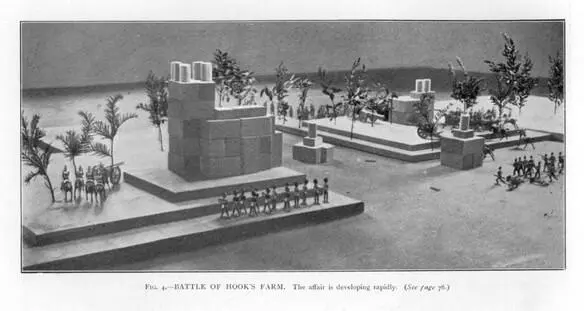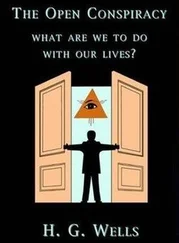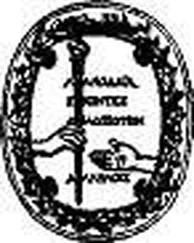Herbert Wells - Little Wars
Здесь есть возможность читать онлайн «Herbert Wells - Little Wars» весь текст электронной книги совершенно бесплатно (целиком полную версию без сокращений). В некоторых случаях можно слушать аудио, скачать через торрент в формате fb2 и присутствует краткое содержание. Год выпуска: 2002, Жанр: Развлечения, на английском языке. Описание произведения, (предисловие) а так же отзывы посетителей доступны на портале библиотеки ЛибКат.
- Название:Little Wars
- Автор:
- Жанр:
- Год:2002
- ISBN:нет данных
- Рейтинг книги:5 / 5. Голосов: 1
-
Избранное:Добавить в избранное
- Отзывы:
-
Ваша оценка:
- 100
- 1
- 2
- 3
- 4
- 5
Little Wars: краткое содержание, описание и аннотация
Предлагаем к чтению аннотацию, описание, краткое содержание или предисловие (зависит от того, что написал сам автор книги «Little Wars»). Если вы не нашли необходимую информацию о книге — напишите в комментариях, мы постараемся отыскать её.
Little Wars — читать онлайн бесплатно полную книгу (весь текст) целиком
Ниже представлен текст книги, разбитый по страницам. Система сохранения места последней прочитанной страницы, позволяет с удобством читать онлайн бесплатно книгу «Little Wars», без необходимости каждый раз заново искать на чём Вы остановились. Поставьте закладку, и сможете в любой момент перейти на страницу, на которой закончили чтение.
Интервал:
Закладка:
(ii) But if the inferior force is not isolated (see (1) above), then each man of the inferior force kills a man of the superior force and is himself killed.
And the player who has just completed the move, the one who has charged, decides, when there is any choice, which men in the melee, both of his own and of his antagonist, shall die and which shall be prisoners or captors.
All these arrangements are made after the move is over, in the interval between the moves, and the time taken for the adjustment does not count as part of the usual interval for consideration. It is extra time.
The player next moving may, if he has taken prisoners, move these prisoners. Prisoners may be sent under escort to the rear or wherever the capturer directs, and one man within six inches of any number of prisoners up to seven can escort these prisoners and go with them. Prisoners are liberated by the death of any escort there may be within six inches of them, but they may not be moved by the player of their own side until the move following that in which the escort is killed. Directly prisoners are taken they are supposed to be disarmed, and if they are liberated they cannot fight until they are rearmed. In order to be rearmed they must return to the back line of their own side. An escort having conducted prisoners to the back line, and so beyond the reach of liberation, may then return into the fighting line.
Prisoners once made cannot fight until they have returned to their back line. It follows, therefore, that if after the adjudication of a melee a player moves up more men into touch with the survivors of this first melee, and so constitutes a second melee, any prisoners made in the first melee will not count as combatants in the second melee. Thus if A moves up nineteen men into a melee with thirteen of B's—B having only five in support—A makes six prisoners, kills seven men, and has seven of his own killed. If, now, B can move up fourteen men into melee with A's victorious survivors, which he may be able to do by bringing the five into contact, and getting nine others within six inches of them, no count is made of the six of B's men who are prisoners in the hands of A. They are disarmed. B, therefore, has fourteen men in the second melee and A twelve, B makes two prisoners, kills ten of A's men, and has ten of his own killed. But now the six prisoners originally made by A are left without an escort, and are therefore recaptured by B. But they must go to B's back line and return before they can fight again. So, as the outcome of these two melees, there are six of B's men going as released prisoners to his back line whence they may return into the battle, two of A's men prisoners in the hands of B, one of B's staying with them as escort, and three of B's men still actively free for action. A, at a cost of nineteen men, has disposed of seventeen of B's men for good, and of six or seven, according to whether B keeps his prisoners in his fighting line or not, temporarily.


(4) Any isolated body may hoist the white flag and surrender at any time.
(5) A gun is captured when there is no man whatever of its original side within six inches of it, and when at least four men of the antagonist side have moved up to it and have passed its wheel axis going in the direction of their attack. This latter point is important. An antagonist's gun may be out of action, and you may have a score of men coming up to it and within six inches of it, but it is not yet captured; and you may have brought up a dozen men all round the hostile gun, but if there is still one enemy just out of their reach and within six inches of the end of the trail of the gun, that gun is not captured: it is still in dispute and out of action, and you may not fire it or move it at the next move. But once a gun is fully captured, it follows all the rules of your own guns.
You may play various types of game.
(1) One is the Fight to the Finish. You move in from any points you like on the back line and try to kill, capture, or drive over his back line the whole of the enemy's force. You play the game for points; you score 100 for the victory, and 10 for every gun you hold or are in a position to take, 1½ for every cavalry-man, 1 for every infantry-man still alive and uncaptured, ½ for every man of yours prisoner in the hands of the enemy, and ½ for every prisoner you have taken. If the battle is still undecided when both forces are reduced below fifteen men, the battle is drawn and the 100 points for victory are divided.
Note—This game can be fought with any sized force, but if it is fought with less than 50 a side, the minimum must be 10 a side.
(2) The Blow at the Rear game is decided when at least three men of one force reach any point in the back line of their antagonist. He is then supposed to have suffered a strategic defeat, and he must retreat his entire force over the back line in six moves, i.e. six of his moves. Anything left on the field after six moves capitulates to the victor. Points count as in the preceding game, but this lasts a shorter time and is better adapted to a cramped country with a short back line. With a long rear line the game is simply a rush at some weak point in the first player's line by the entire cavalry brigade of the second player. Instead of making the whole back line available for the Blow at the Rear, the middle or either half may be taken.
(3) In the Defensive Game, a force, the defenders, two-thirds as strong as its antagonist, tries to prevent the latter arriving, while still a quarter of its original strength, upon the defender's back line. The Country must be made by one or both of the players before it is determined which shall be defender. The players then toss for choice of sides, and the winner of the toss becomes the defender. He puts out his force over the field on his own side, anywhere up to the distance of one move off the middle line—that is to say, he must not put any man within one move of the middle line, but he may do so anywhere on his own side of that limit—and then the loser of the toss becomes first player, and sets out his men a move from his back line. The defender may open fire forthwith; he need not wait until after the second move of the first player, as the second player has to do.
Except in the above cases, or when otherwise agreed upon, the forces engaged shall be equal in number and similar in composition. The methods of handicapping are obvious. A slight inequality (chances of war) may be arranged between equal players by leaving out 12 men on each side and tossing with a pair of dice to see how many each player shall take of these. The best arrangement and proportion of the forces is in small bodies of about 20 to 25 infantry-men and 12 to 15 cavalry to a gun. Such a force can maneuver comfortably on a front of 4 or 5 feet. Most of our games have been played with about 80 infantry, 50 cavalry, 3 or 4 naval guns, and a field gun on either side, or with smaller proportional forces. We have played excellent games on an eighteen-foot battlefield with over two hundred men and six guns a side. A player may, of course, rearrange his forces to suit his own convenience; brigade all or most of his cavalry into a powerful striking force, or what not. But more guns proportionally lead to their being put out of action too early for want of men; a larger proportion of infantry makes the game sluggish, and more cavalry—because of the difficulty of keeping large bodies of this force under cover—leads simply to early heavy losses by gunfire and violent and disastrous charging. The composition of a force may, of course, be varied considerably. One good Fight to a Finish game we tried as follows: We made the Country, tossed for choice, and then drew curtains across the middle of the field. Each player then selected his force from the available soldiers in this way: he counted infantry as 1 each, cavalry as 1½, and a gun as 10, and, taking whatever he liked in whatever position he liked, he made up a total of 150. He could, for instance, choose 100 infantry and 5 guns, or 100 cavalry and no guns, or 60 infantry, 40 cavalry, and 3 guns. In the result, a Boer-like cavalry force of 80 with 3 guns suffered defeat at the hands of 110 infantry with 4.
Читать дальшеИнтервал:
Закладка:
Похожие книги на «Little Wars»
Представляем Вашему вниманию похожие книги на «Little Wars» списком для выбора. Мы отобрали схожую по названию и смыслу литературу в надежде предоставить читателям больше вариантов отыскать новые, интересные, ещё непрочитанные произведения.
Обсуждение, отзывы о книге «Little Wars» и просто собственные мнения читателей. Оставьте ваши комментарии, напишите, что Вы думаете о произведении, его смысле или главных героях. Укажите что конкретно понравилось, а что нет, и почему Вы так считаете.



